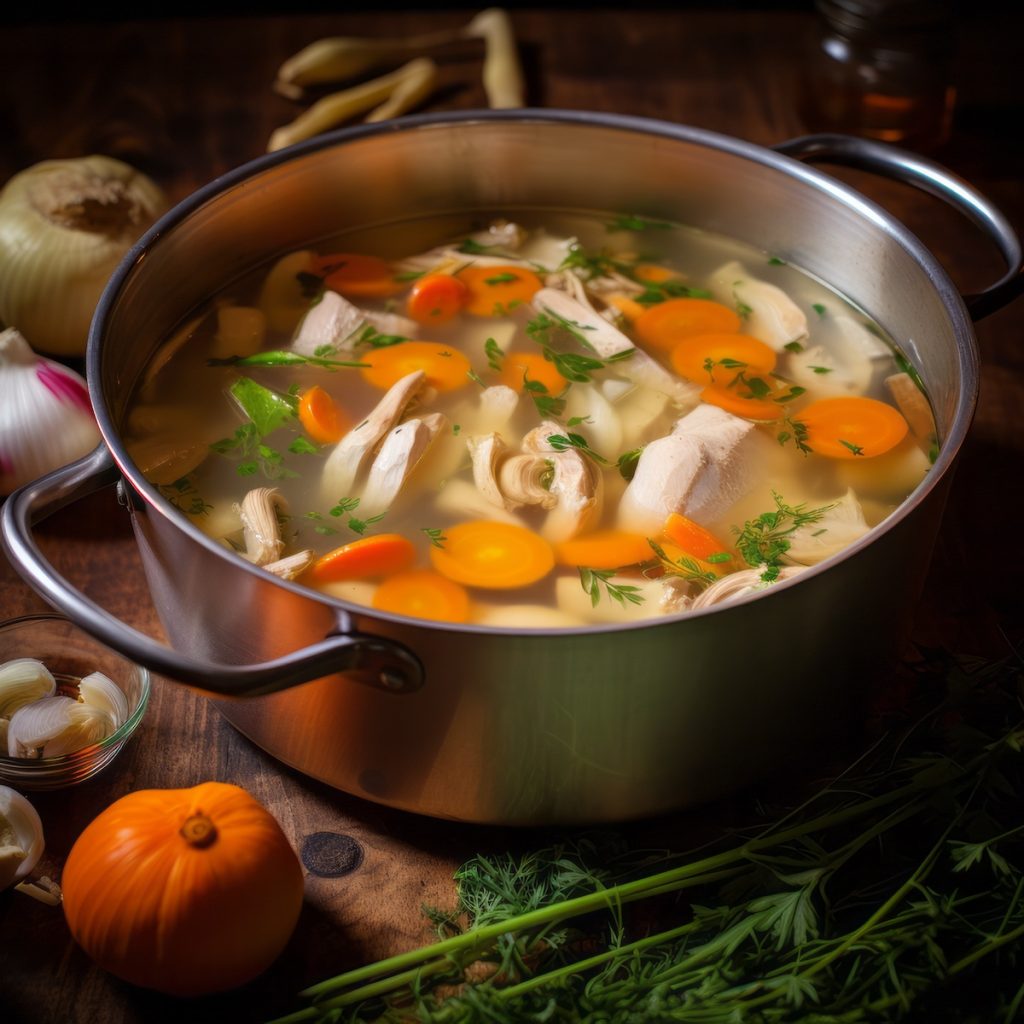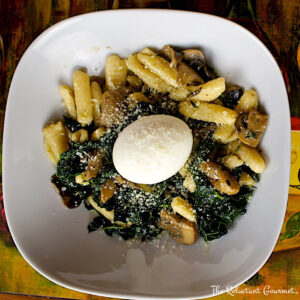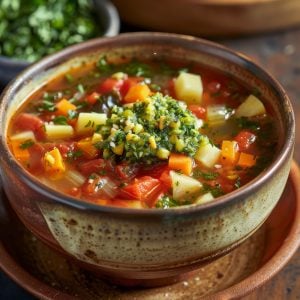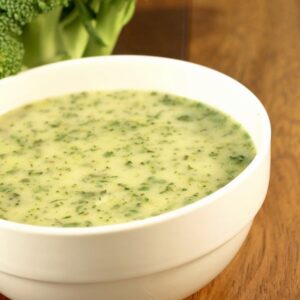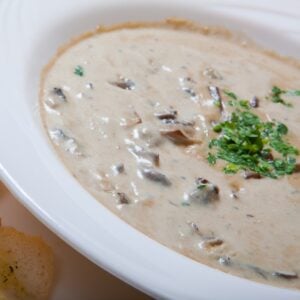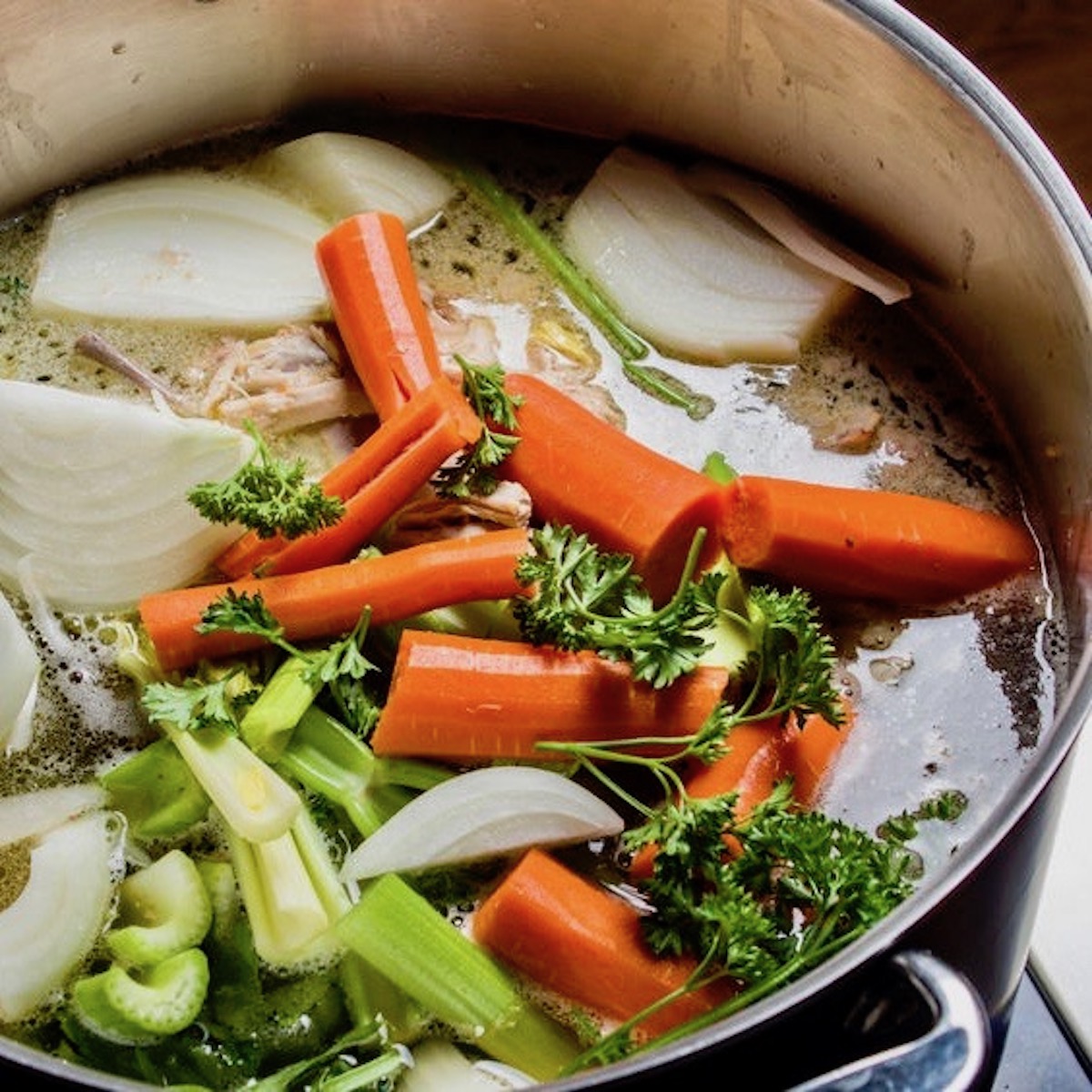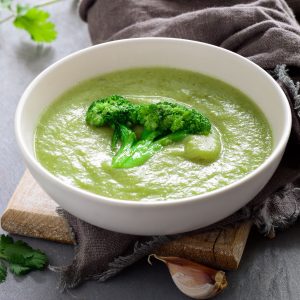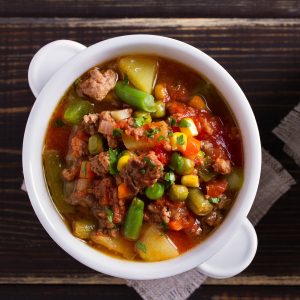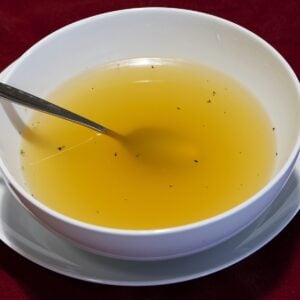Two Types of Chicken Stock
Chicken stock is a fundamental building block of countless dishes, from soups and stews to sauces and gravies. Making your own chicken stock at home enhances the flavor of your cooking and allows you to control the ingredients, ensuring a healthier and more personalized result.
Whether using leftover chicken bones or roasting fresh chicken parts, homemade stock infuses your recipes with a deep, savory richness that store-bought alternatives can’t match. Plus, it’s an easy, cost-effective way to use up kitchen scraps, making it an environmentally friendly option as well.
In this post, we’ll explore how to create a flavorful, aromatic chicken stock from scratch and share a versatile recipe that will elevate your next meal. Let’s get started!
“If you want to prepare delicious, “incredible” food, you must start with the right ingredients. And, without a doubt, that includes homemade stock. ” – Chef Jean-Pierre Brehier
White or Brown Chicken Stock
The main differences between white and brown chicken stock are their preparation methods and the resulting flavors.
White Chicken Stock
White chicken stock is made by simmering raw chicken bones, often with vegetables (like carrots, celery, and onions), herbs, and cold water. It is brought to a gentle simmer without prior browning or roasting.
This results in a cleaner, lighter flavor, ideal for delicate dishes such as soups or sauces that don’t require a heavy base. White stock is typically clearer, with a subtle, neutral taste that allows other ingredients to shine.
Brown Chicken Stock
In contrast, brown chicken stock is made by first roasting the chicken bones and vegetables in the oven until they develop a deep golden-brown color. This caramelization imparts a rich, robust flavor to the stock.
Once roasted, the bones and vegetables are simmered in water with herbs and spices, resulting in a darker, more complex stock with a deeper, slightly sweeter, and fuller flavor. Brown stock is often used for hearty dishes, such as gravies, stews, or braises, where a richer base is desired.
Key Differences
- Flavor: Brown stock has a more intense, caramelized flavor, while white stock has a lighter, milder taste.
- Color: Brown stock is darker due to the roasting process, while white stock remains pale.
- Cooking Time: Brown stock often takes longer to prepare, as the roasting step requires additional time before simmering.
Both types of stock are versatile, but choosing one over the other depends on the depth of flavor and color you’re aiming for in your dish. White stock is ideal for subtle broths and lighter recipes, while brown stock adds richness and complexity to heartier dishes.
White Chicken Stock in Sauces
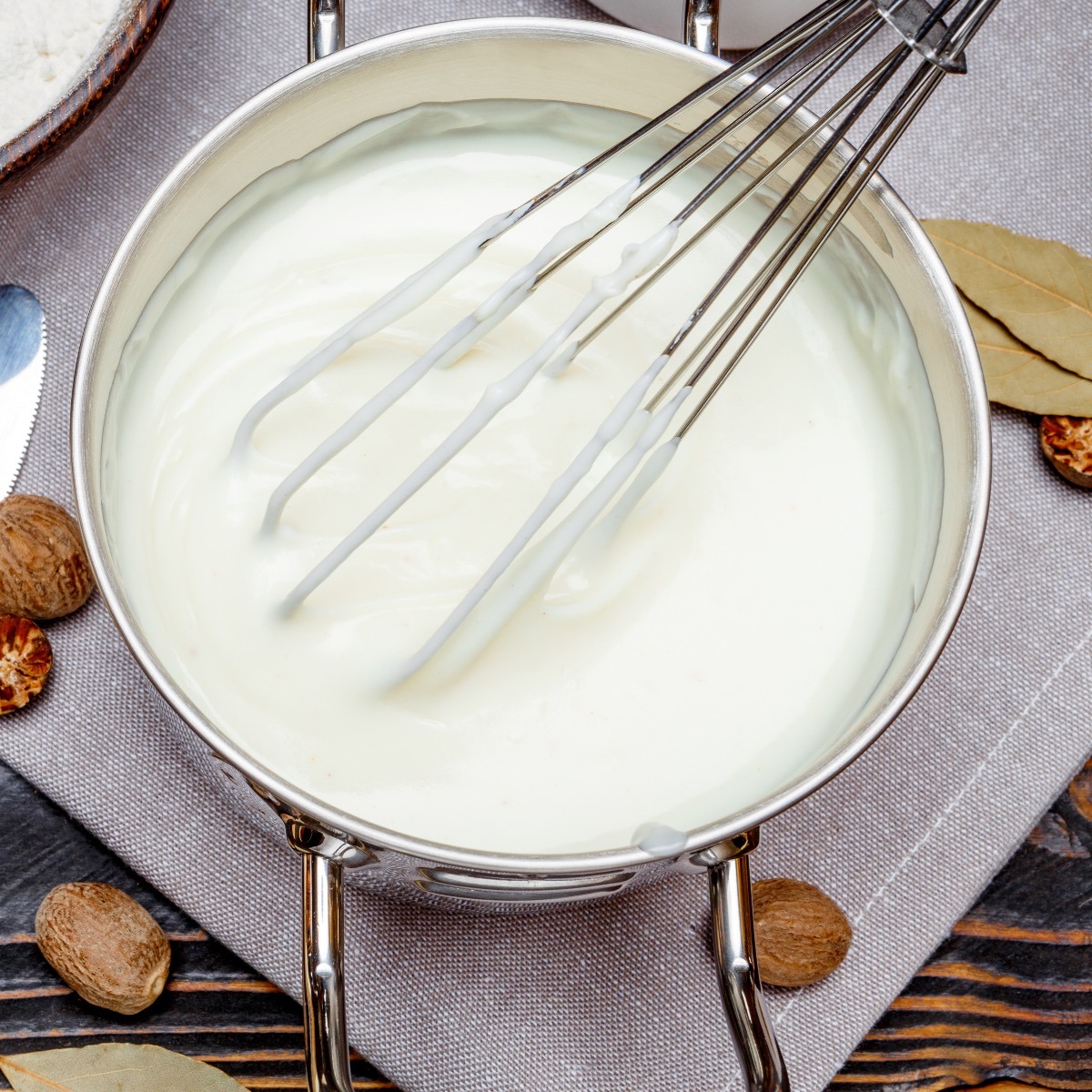
White chicken stock serves as a foundational ingredient in many classic sauces, especially those in French cuisine, where it adds a subtle, balanced flavor without overwhelming other components. Here are a few notable sauces that use white chicken stock:
Velouté is one of the five “mother sauces” in French cuisine. It’s made by thickening white chicken stock (or white stock from other meats) with a roux (a mixture of butter and flour). The result is a smooth, velvety sauce that serves as the base for many variations.
Velouté can be further modified with additional ingredients like cream (for a cream sauce), wine, or lemon to create sauces like Suprême or Allemande. This sauce is commonly used in dishes like chicken or veal à la king and various poultry preparations.
Sauce Chasseur (also known as “Hunter’s Sauce”), is made by combining white chicken stock with mushrooms, shallots, white wine, and herbs (often tarragon or thyme). It’s typically served with poultry or game meats, enhancing their flavors with a rich, earthy profile. The stock is crucial for adding depth and balancing the wine’s acidity.
Béchamel is a milk-based sauce; it can also be adapted with white chicken stock for dishes requiring a lighter, poultry-infused flavor. This sauce serves as a creamy base for pasta dishes, lasagna, and gratins and can be flavored further with cheese or herbs. Using chicken stock instead of milk results in a more savory and flavorful twist .
Sauces for Poached or Roasted Poultry
Many lighter sauces for poached or roasted chicken use white chicken stock as their base. A simple herb sauce made by reducing the stock with fresh herbs, a bit of white wine, and some butter is a common accompaniment, enhancing the dish without overpowering it. A similar approach can be used to make lemon or mustard-based sauces, where the stock helps balance the acidity with its mild richness.
What is a Sachet?
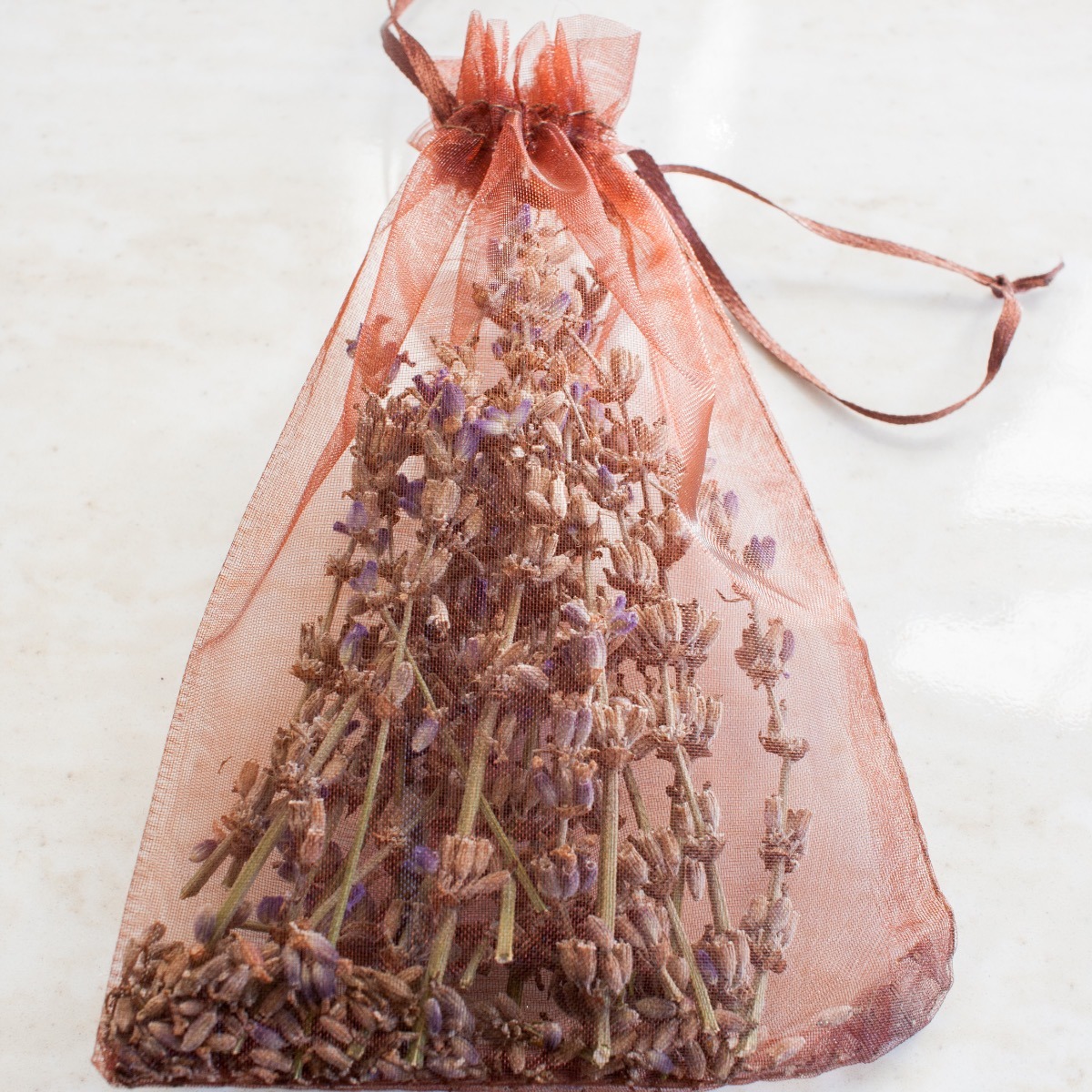
A sachet is a small bag made of cloth or cheesecloth filled with various herbs and spices and used to add flavor to soup, stews, stocks, and sauces. The combination of herbs and spices can vary depending on your cooking but typically includes bay leaves, peppercorns, parsley, and thyme.
Fresh herbs and spices are better, but dried ones will do nicely if you need access to fresh ones. You can use kitchen string (I have a roll of kite string in our kitchen) to tie the bundle together or even tie the four corners to themselves.
I have even seen these nifty disposable cloth bags you can buy at kitchen supply stores.
White Chicken Stock Recipe
Ingredients
- 5 pounds chicken pieces wings, backs and necks. (If you purchase whole chickens to cut up for a recipe, you can always remove these parts and freeze them until you have enough to make stock.)
- 4 quarts cold water
- 2 onions
- 3 carrots
- 3 celery stalks
For the Sachet
- 2 bay leaves
- 6 sprigs of fresh parsley
- 12 whole peppercorns
- 1 teaspoon fresh thyme or 1/2 teaspoon dried
Instructions
- Pre-heat the oven to 350°F.
If you purchased whole chickens, cut them up into pieces. I like to remove the breasts to use in a different recipe but if you like white meat in your soup, use it but add it to pot near the end so it isn't overcooked.
- Make the Sachet by adding the ingredients in some cheese cloth that you tie up with a string.
- Peel the onions and carrots (although a good scrub will suffice).
- Chop the onions and quarter the carrots as well as the celery.
- Place the chicken pieces and vegetables in a sturdy roasting pan. You may want to apply a thin layer of oil or spray Pam to the surface to prevent sticking.
- Roast the chicken and vegetables until the chicken pieces are brown.
- Remove the chicken and vegetables to a large stock pot.
- If there is a lot of fat floating on the surface of the roasting pan, remove it with a spoon but leave the wonderful caramelized juices that are a result of roasting the ingredients.
- Put the roasting pan on your stove top and add 1 quart of the water. The pan is already hot so be careful and be sure to use your oven mitts.
- Using a wooden spoon, scrape any brown bits of chicken or vegetables that may be stuck to the bottom of the pan and mix them into the rest of the liquids.
- Pour the combined water and juices over the chicken and vegetables in the stock pot.
- Add the rest of the water to the stock pot and bring the heat up to high. You want to watch this closely at this point because as soon as the water comes to a boil, you want to reduce the heat to a nice gentle simmer.
- You will find impurities floating to the top in the form of fat or foam. Periodically remove the foam with a spoon.
- Add the sachet to the pot.
- Gently simmer for 3 to 4 hours removing any impurities as they form on the surface.
- When done, remove the sachet and strain the stock through a fine meshed strainer. Let the stock cool and then transfer it to airtight containers and store in the refrigerator for up to a week.
- You may find a thin layer of fat that has congealed on the surface of the stock after you have refrigerated it. Just scrape it off with a spoon.
- You can also freeze your brown chicken stock up to 3 months.
You now have a rich, flavorful, important ingredient that you can use to make all sorts of soups and stews. It can also be used when you sauté or to deglaze pan sauces. And you won't believe how much better it is than the salty canned stuff you buy in a store.
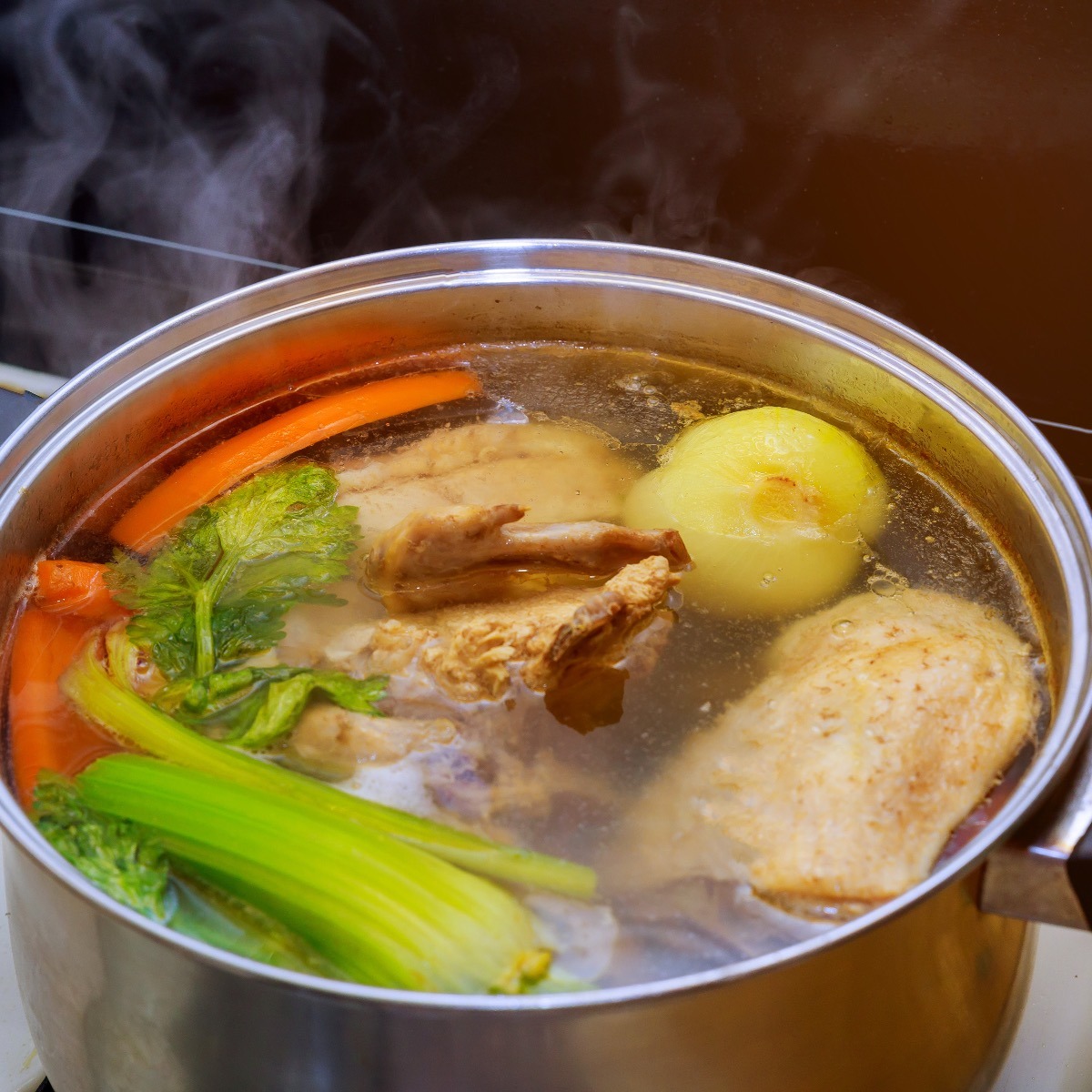
White Chicken Stock Recipe
Ingredients
- 5 pounds chicken pieces wings, backs and necks. (If you purchase whole chickens to cut up for a recipe, you can always remove these parts and freeze them until you have enough to make stock.)
- 4 quarts cold water
- 2 onions
- 3 carrots
- 3 celery stalks
For the Sachet
- 2 bay leaves
- 6 sprigs of fresh parsley
- 12 whole peppercorns
- 1 teaspoon fresh thyme or 1/2 teaspoon dried
Instructions
- Pre-heat the oven to 350°F.
If you purchased whole chickens, cut them up into pieces. I like to remove the breasts to use in a different recipe but if you like white meat in your soup, use it but add it to pot near the end so it isn't overcooked.
- Make the Sachet by adding the ingredients in some cheese cloth that you tie up with a string.
- Peel the onions and carrots (although a good scrub will suffice).
- Chop the onions and quarter the carrots as well as the celery.
- Place the chicken pieces and vegetables in a sturdy roasting pan. You may want to apply a thin layer of oil or spray Pam to the surface to prevent sticking.
- Roast the chicken and vegetables until the chicken pieces are brown.
- Remove the chicken and vegetables to a large stock pot.
- If there is a lot of fat floating on the surface of the roasting pan, remove it with a spoon but leave the wonderful caramelized juices that are a result of roasting the ingredients.
- Put the roasting pan on your stove top and add 1 quart of the water. The pan is already hot so be careful and be sure to use your oven mitts.
- Using a wooden spoon, scrape any brown bits of chicken or vegetables that may be stuck to the bottom of the pan and mix them into the rest of the liquids.
- Pour the combined water and juices over the chicken and vegetables in the stock pot.
- Add the rest of the water to the stock pot and bring the heat up to high. You want to watch this closely at this point because as soon as the water comes to a boil, you want to reduce the heat to a nice gentle simmer.
- You will find impurities floating to the top in the form of fat or foam. Periodically remove the foam with a spoon.
- Add the sachet to the pot.
- Gently simmer for 3 to 4 hours removing any impurities as they form on the surface.
- When done, remove the sachet and strain the stock through a fine meshed strainer. Let the stock cool and then transfer it to airtight containers and store in the refrigerator for up to a week.
- You may find a thin layer of fat that has congealed on the surface of the stock after you have refrigerated it. Just scrape it off with a spoon.
- You can also freeze your brown chicken stock up to 3 months.

